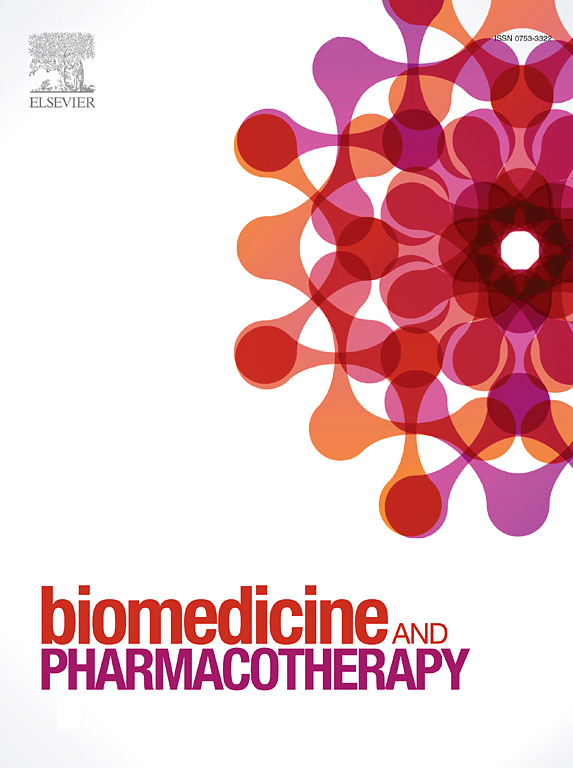作为铜绿假单胞菌抑制剂的柑橘黄酮类化合物 diosmin、myricetin 和 neohesperidin:来自抗生物膜、基因表达和体内分析的证据
IF 6.9
2区 医学
Q1 MEDICINE, RESEARCH & EXPERIMENTAL
引用次数: 0
摘要
柑橘类黄酮是一类具有生物活性的多酚。在这里,我们研究了 diosmin、myricetin 和 neohesperidin 作为铜绿假单胞菌可能的抑制剂的潜力。铜绿假单胞菌具有形成抗性生物膜的倾向,是临床上的一大难题。本研究的目的是利用微稀释法、旨在确定几种抗生物膜机制的试验(水晶紫、刚果红结合、细胞外 DNA(eDNA)测试和共聚焦激光扫描显微镜(CLSM)活/死细胞成像)来检测类黄酮的抗菌活性,然后进行毒力基因 RT-qPCR 分析。此外,我们还研究了这些化合物的体内毒性及其在铜绿假单胞菌斑马鱼胚胎感染模型中的疗效。受测黄酮类化合物对铜绿假单胞菌的最小抑制浓度为 0.05 - 0.4 mg/mL。根据记录,这些化合物在干扰细菌生物膜的形成和消除生物膜方面都有很高的潜力,包括显著降低生物膜生物量、外多糖和 eDNA 的产生。根据 CLSM 活/死细胞成像观察,使用地奥司明处理生物膜后,活微生物细胞的百分比最低。研究发现,lasI、pvdS 和 rhlC 基因在 diosmin 和 myricetin 的存在下调。只有地奥司明没有胚胎毒性。因此,利用铜绿微囊藻感染斑马鱼模型进行的体内分析表明,地奥司明具有抗病毒作用。我们的研究结果表明,地奥司明有可能通过降低铜绿假单胞菌的毒力机制,开发出针对铜绿假单胞菌感染的新制剂。本文章由计算机程序翻译,如有差异,请以英文原文为准。
Citrus flavonoids diosmin, myricetin and neohesperidin as inhibitors of Pseudomonas aeruginosa: Evidence from antibiofilm, gene expression and in vivo analysis
Citrus flavonoids are group of bioactive polyphenols. Here, we investigated the potential of diosmin, myricetin and neohesperidin as possible inhibitors of Pseudomonas aeruginosa. This bacterium is a major clinical challenge due to its propensity to form resistant biofilm. The aims of this study were to examine flavonoids antibacterial activity using the microdilution method, assays intended to determine several antibiofilm mechanisms (crystal violet, congo red binding, extracellular DNA (eDNA) test and confocal laser scanning microscopy (CLSM) live/dead cell imaging), followed by virulence genes RT-qPCR analysis. Furthermore, we aimed to examine in vivo toxicity of the compounds as well as their efficacy in P. aeruginosa zebrafish embryo infection model. Minimal inhibitory concentrations of tested flavonoids towards P. aeruginosa were in range 0.05 – 0.4 mg/mL. A high potential of the compounds to disturb both the formation of the bacterial biofilm and its eradication was recorded, including significant reduction in biofilm biomass, exopolysaccharide and eDNA production. Biofilm treatment with diosmin resulted in the lowest percentage of live microbial cells as observed in the CLSM live/dead cell imaging. The lasI, pvdS, and rhlC genes were found to be downregulated in the presence of diosmin and myricetin. Only diosmin stood out as non-embryotoxic. Consequently, in vivo analysis using a zebrafish model of P. aeruginosa infection showed an antivirulence effect of diosmin. Our findings suggest that diosmin could be potential candidate for the development of new agent that target P. aeruginosa infections by reducing its virulence mechanisms.
求助全文
通过发布文献求助,成功后即可免费获取论文全文。
去求助
来源期刊
CiteScore
11.90
自引率
2.70%
发文量
1621
审稿时长
48 days
期刊介绍:
Biomedicine & Pharmacotherapy stands as a multidisciplinary journal, presenting a spectrum of original research reports, reviews, and communications in the realms of clinical and basic medicine, as well as pharmacology. The journal spans various fields, including Cancer, Nutriceutics, Neurodegenerative, Cardiac, and Infectious Diseases.

 求助内容:
求助内容: 应助结果提醒方式:
应助结果提醒方式:


